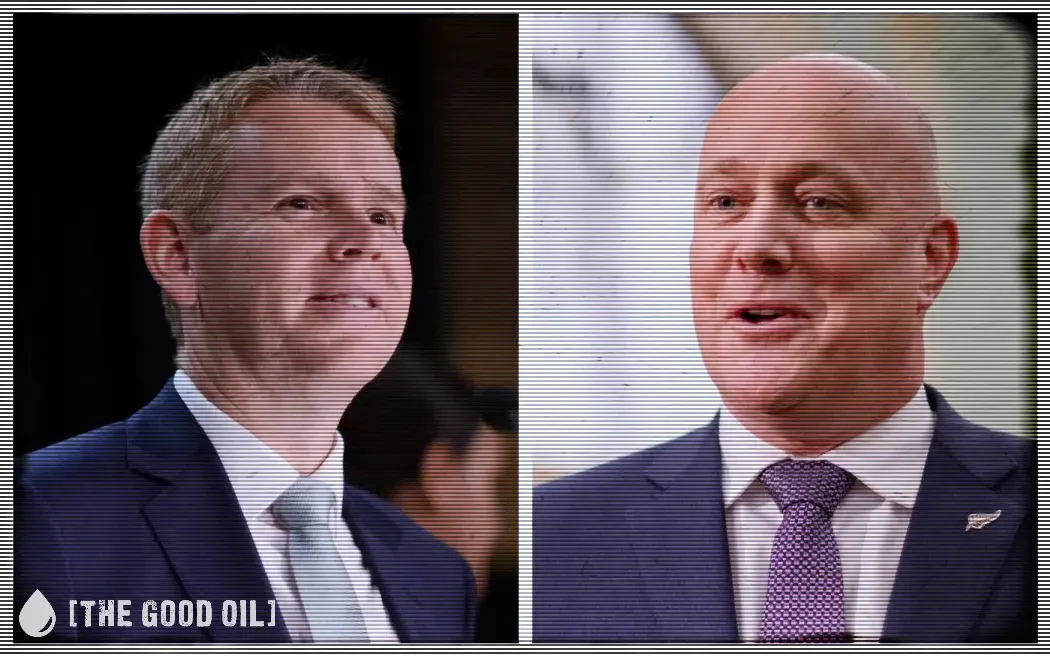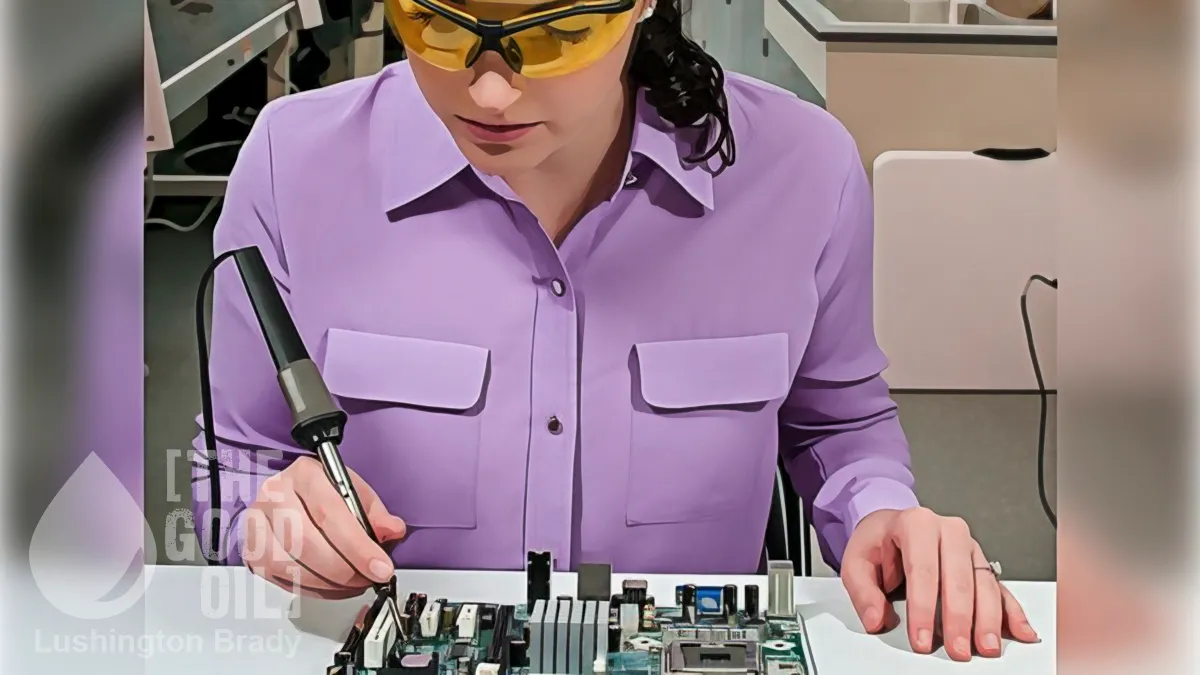Karl du Fresne
I’m a third-generation New Zealander of Irish, Danish and French descent. I grew up in the farming town of Waipukurau and still consider it my turangawaewae, although I can walk the length of the main street these days and not recognise a single face.
So let me see if I’ve got this straight: the government’s response to public fury and exasperation at the wasteful, disruptive and mostly useless traffic management racket is to set up a hotline where people can report excessive road cone use? God save us.
I predict this pathetically feeble non-solution, announced last week, will achieve one-fifth of SFA because hardly anyone will bother ringing an 0800 number to dob the traffic management racketeers in.
People will rightly be deeply sceptical about trying to engage by phone with an anonymous and remote bureaucracy, knowing they’re likely to be left hanging on the line for ages before anyone answers – and that their complaint will go nowhere anyway, disappearing into a yawning black hole. People are profoundly distrustful of hotlines and with good reason.
And perhaps it’s just as well if no one bothers using the service. Given that it’s hard to drive more than 10 km on any state highway without seeing forests of road cones, interminable temporary speed limit signs and traffic management trucks holding up traffic, often for no discernible reason, the line would be clogged 24/7.
More to the point, however, the hotline is a contemptible cop out that places the onus on us citizens to deal with the problem of sclerotic, cone-choked roads when the real responsibility lies with the politicians themselves.
They allowed the traffic management monster to run rampant and it’s their responsibility to cut it down to size, starting with a root-and-branch clean out of the New Zealand Transport Agency from board level down – which would mean defenestrating the chair, former National Party leader Simon Bridges – and the imposition of a new corporate culture that emphasises consideration for road users ahead of do-nothing jobs and profits for the traffic management racketeers.
Prime Minister Christopher Luxon and Workplace Relations and Safety Minister Brooke van Velden (whose title gives you a rather large clue to where things started going wrong) both admit that excessive traffic management is a plague upon the land.
“You can drive around this country at different times of the day and you’ve got whole roads shut down, no one is doing any work and the cones are frankly just clogging up the joint,” Luxon said at his post-Cabinet press conference on Monday.
Setting aside the fact that no politician should ever feel the need to use that flatulent and empty word frankly in an attempt to sound tough, since we’re entitled to assume they’re always expressing their genuine opinion, we should probably at least be grateful that Luxon has finally cottoned on to an issue that’s been driving New Zealand road users mad with frustration for years.
For her part, van Velden says the issue of a “sea of cones” was brought up at almost every public meeting she attended on a recent road trip. So why has it taken so long for the government to wake up, and why has it responded with such a timid, half-arsed response?
Instead of faffing around with useless hotlines, the government should be asserting its authority by getting tough on the NZTA. After all, the traffic management racket wouldn’t – couldn’t – exist without the NZTA’s endorsement and approval.
What we’ve got here is a cosy, symbiotic relationship between the NZTA, roading contractors and traffic management companies. Over the past 10 years or so the latter have proliferated like… well, like road cones. This unholy three-way alliance is holding the country hostage and playing us all for suckers.
And what’s the government’s solution? A bloody hotline. Good grief.
I don’t mind admitting this has become personal for me. I do a lot of driving. Over the past three years I’ve covered every region and every provincial city in the country with the exception of Invercargill (the closest I got was Gore). And every time I set out on a road trip I brace myself for the delays and disruptions that I know are inevitable.
We go along with this costly and unnecessary pantomime because we’re passive, compliant people. That was shown during the Covid pandemic, when we meekly fell into line with authoritarian controls that, in retrospect, are now acknowledged as oppressively over the top (and yes, I admit I was one of the fall-into-liners).
Traffic management depends on that same deference to authority. The NZTA and its traffic management bullies wield the power and we have little choice but to do as they instruct. I mean, what are your options when you’re forced to make a wholly unnecessary one-hour detour (as I did not long ago) or crawl at 30 kmh through road works that have been in progress for months and even years and where nothing is happening? You can only fume impotently.
Sure, you could abuse the traffic management people standing around in their hi-vis vests (standing or sitting around being quite literally what they do most of the time, usually staring at their smartphones). But what would that achieve? They’re certainly a big part of the problem, but they didn’t cause it. The fault lies with the NZTA bureaucrats, who are safely insulated from public wrath; and beyond them, with the politicians who allowed the grotesque traffic management racket to flourish in the first place and only now are waking up to the great bloated nuisance it has become.
Oh, but I forget: the politicians have taken bold and decisive action. They’ve set up a hot line to report excessive use of road cones. Problem solved, then.
Looking for some facts to substantiate my jaundiced view of the hi-vis highwaymen, I recently asked the NZTA to provide me with figures showing the proportion of the national roading budget devoted to traffic management. I had seen speculative estimates ranging as high as 40 per cent, which struck even me as unlikely.
Extraordinarily, it turns out that the NZTA has not historically separated out traffic management costs from its overall expenditure. This in itself suggests slack budgetary management and a remarkable lack of concern about how public funds are spent.
I would have thought that the cost of traffic management was the type of significant information NZTA board members would expect to have at their fingertips. That they apparently didn’t think to routinely request it every year doesn’t inspire confidence in their competence.
The NZTA told me, however, that it had recently undertaken a project – as if the thought had only just occurred to it – that sampled its contracts, and from this it was able to calculate average TTM (temporary traffic management) costs. These indicated that TTM over the past three years accounted for between nine and 9.5 per cent of total spending on road maintenance, operations and capital contracts. At first glance, that may not sound outrageous. But when you look at it in dollar terms, a different impression takes shape. In the years 2021–24, NZTA spent $786 million on traffic management. $786 million! That was out of total state highway costs of $8.4 billion. In 2023–24, the cost of TTM was put at $317 million (assuming the NZTA got its calculations right).
It goes without saying that $786 million buys a helluva lot of road cones, high-vis vests and expensive trucks and utes with their ostentatious flashing lights. This may explain why so many of the trucks and utes appear to be new.
It’s also clear from the NZTA response to my inquiry that there’s no systematic collection of reliable information relating to the cost of traffic management. That’s how I interpret the NZTA’s statement that “We have collected TTM actual and physical works costs from suppliers for a sample of contracts where costs were recorded and accurate, and we have calculated TTM costs percentages accordingly.”
Here’s an obvious question: if the NZTA doesn’t have complete and accurate records showing what TTM is costing, as that statement suggests, how can it know whether it’s getting its money’s worth?
You might think that a switched-on board of directors would want to know whether the money was effectively spent. Has any work been done on costs versus benefits? Does the NZTA have any idea how many lives have been saved or serious injuries avoided by its road-cone control freakery?
If any research has been done, let’s see it. If it hasn’t been done, why not?
Has anyone bothered to weigh the supposed safety benefits of the traffic management racket against the incalculable delay, frustration and inconvenience caused to road users? And I don’t just mean hapless private motorists like me.
Infuriating though it is to have my travel constantly disrupted, the far more serious impact is on commercial traffic. God alone knows the cumulative economic cost of holdups in the supply chain caused by trucks and tankers sitting idle for long periods at temporary red lights, forced to make detours or made to drive at ridiculous speeds through long sections of road works where nothing is happening.
The counter argument, of course, is that roads are part of our essential infrastructure and must be kept in good condition. That requires maintenance work. People understand that and will accept a reasonable amount of inconvenience. But it bears repeating over and over again that the contagion of traffic management New Zealand-style is a new phenomenon.
For decades our highways were built and maintained, often in very challenging places, without the need for heavy-handed traffic management, forests of road cones and lots of bullying trucks with flashing lights. We did it then. What makes it impossible now?
Part two to come ...
This article was originally published on the author’s blog.







